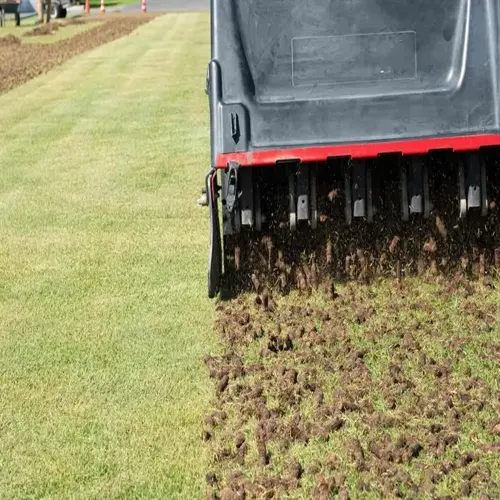What common mistakes should you avoid when mulching?

Written by
Benjamin Miller
Reviewed by
Prof. Samuel Fitzgerald, Ph.D.By steering clear of these common mistakes when mulching, fruit trees are protected from serious damage. Mulch volcanoes build up around the trunks, causing excessive moisture retention and bark diseases. Fresh wood chips can deplete the soil of nitrogen, and dyed mulches can cause toxicity. Thin applications allow weeds to grow, while dry soil mulching creates water barriers and prevents moisture penetration into the soil. Without proper technique, your trees suffer.
Trunk Contact Fixes
- Remove excess mulch immediately from trunk base
- Create 6-inch clearance circle around tree
- Check for bark damage and treat if needed
Fresh Chip Solutions
- Add blood meal to compensate nitrogen loss
- Layer compost beneath fresh chips
- Allow decomposition before root zone application
Depth Adjustment
- Measure existing mulch depth with ruler
- Add material to reach 3-4 inch minimum
- Maintain even distribution across root zone
Remedy mulched volcanoes immediately, or they will cause irreversible damage. Pull back mulched material near tree trunks carefully. Check bark for soft spots indicating rot. Make a correct donut-shaped covering instead. This easy fix helps save trees from diseases and pest invasion.
Control nitrogen balance with existing wood chips. These materials have complex elements that are subject to decomposition. Combat this by applying nitrogen-rich amendments such as blood meal. Place chips of the existing compost over the finished compost to nourish it slowly. Your trees then avoid yellow leaves and stunted growth.
Prevent chemical contamination from dyed mulches. These products can contain heavy metals such as arsenic. Choose natural wood chips or straw instead. Contact local arborists to see if you can have untreated materials. Your fruit trees will thrive without toxin accumulation in their roots.
Ensure sufficient depth for effective weed control. Measure the thickness of the mulch monthly during the growing season. Add more mulch when it compresses to below 3 inches. Be consistent in covering the entire root zone. This will not only prevent competition from weeds but also help conserve moisture.
Prevent hydrophobic conditions by preparing the soil properly. Water the area well before applying any mulch. Test moisture at 6" depth. This will prevent the formation of water-repellent barriers in sandy soils. Your trees will have access to all the water and nutrients they need.
Incorporate regular monitoring to identify problems before errors are encountered. During monthly orchard inspections, check the condition of the mulch. Look for indications of mold, pests, and decomposition problems either directly or indirectly. Apply any seasonal corrections before issues advance. Your diligence will give the best possible growing conditions.
Read the full article: Mulching Fruit Trees: Ultimate Guide

